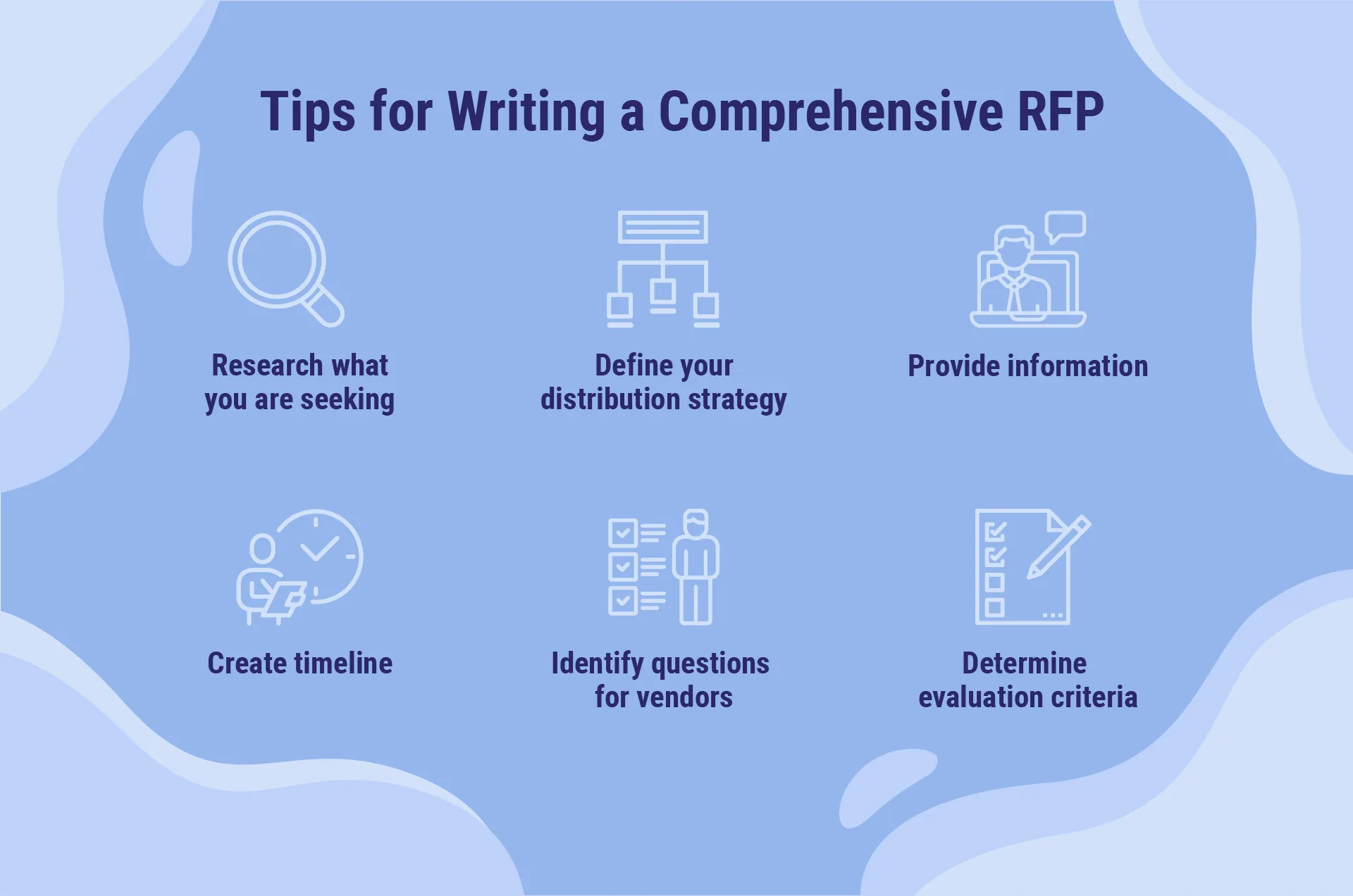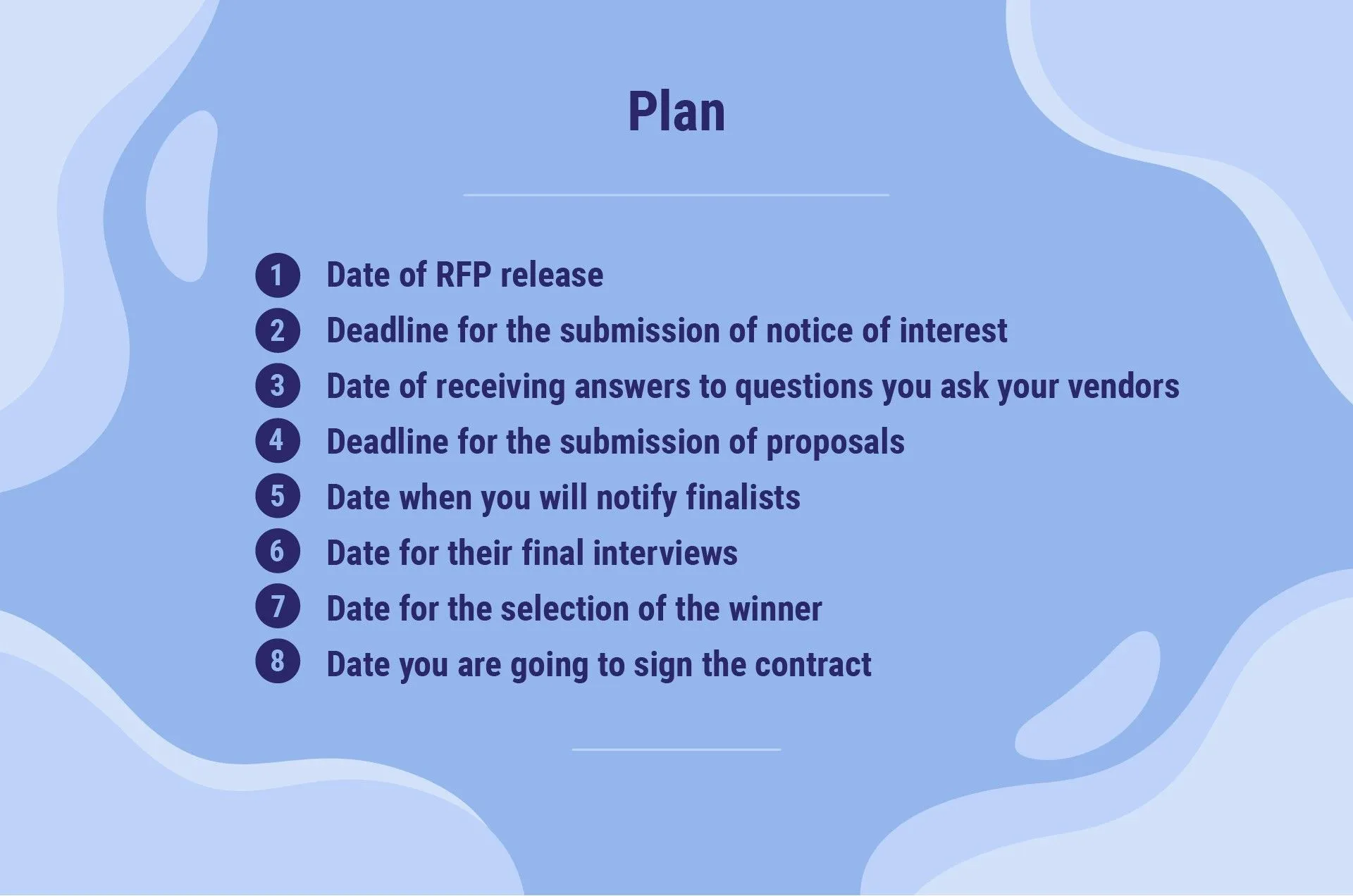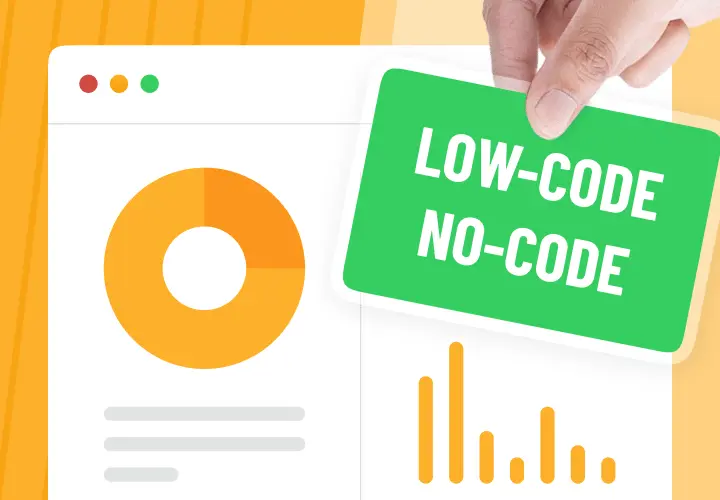How to Create an Effective RFP? Useful Tips
Table of contents
What Is an RFP?
Step-By-Step RFP Process
- 1. Creating a draft
- 2. Writing and issuing RFP
- 3. Scoring and shortlisting proposals
- 4. Selecting a vendor
Creating a Draft: What Should Be in an RFP
Writing and Issuing RFP: Useful Tips
- #1 Research what you are seeking
- #2 Define your distribution strategy
- #3 Provide information
- #4 Create timelines
- #5 Identify questions for vendors
- #6 Determine evaluation criteria
The Bottom Line
The development of a sound RFP is one of the key priorities for businesses that look for a vendor capable of delivering technological solutions of their interest. When properly created, this document eliminates numerous headaches associated with both the process of choosing a vendor and followed up product development. It provides businesses with the opportunity to compare potential vendors by a variety of important criteria, including price, time, technological competencies, etc.
So how to create an RFP document that works? Let’s try to answer this question step by step.
What Is an RFP?
To start with, let’s define and formulate the purpose of RFP.
Request for Proposal definition given by Wikipedia is the following:
An RFP (Request for Proposal) is a formal document that a company or agency uses to invite vendors or suppliers to submit bids for a specific project or service. This process allows the organization to compare different solutions and choose the best option for their needs.

When it comes to the world of IT, RFP can be defined as a formal request for a demonstration of experience, skills, and competencies needed to cover the process of product development, sent by a company that wants to receive a tech solution to the potential vendor.
So when it comes to the question of what the purpose of RFP is, the answer is the digitalization and comprehensive description of your company’s/project’s needs. It is exactly a Request for Proposal that can give you a clearer picture of how each of the selected vendors can contribute to your company’s technological advancement and business success. Also, it becomes quite useful for the creation of benchmarks of success that can be used when the vendor is selected and your product is under development.
Step-By-Step RFP Process
Now let’s dive into the RFP process, so you can understand what steps will take you from the idea of creating some tech solution to it being under development. Typically, there are 4 steps that make up the whole process.
1. Writing and issuing RFP;
2. Creating a draft;
3. Scoring and shortlisting proposals;
4. Selecting a vendor.

The first two steps of the RFP process will be discussed in more detail in the blocks below. As for now, let’s look briefly into each step.
1. Creating a draft
It is made up of the discovery of your project goals, budget, timeframe, etc. with stakeholders, and further listing of the important elements in an RFP document.
2. Writing and issuing RFP
This step includes a detailed and well-thought-out description of the desired outcomes and other important issues that need to be addressed by your future vendor.
3. Scoring and shortlisting proposals
The stage when you eliminate vendors that don’t meet your non-negotiables and identify the strongest ones.
4. Selecting a vendor
The shortest to describe but the hardest step where you take a final decision on the best contractor.
Even though it may seem at first sight that the whole process is plain and simple, there are still certain things to pay attention to, as well as the tips that will help you get the most out of your Request for Proposal. So let’s discover them.
Creating a Draft: What Should Be in an RFP

It’s evident that RFP plays a significant role in choosing a vendor, and your approach to the creation of this document deserves the same level of dedication that you expect from your potential vendors. For this reason, before providing you with advice on how to write an RFP that works, let’s point out the crucial components of its draft.
Sections of an RFP’s draft generally include:
- Introduction that tells about your company and your project’s background;
- The section where you name all the desired goals of your project and scope of services you are looking for;
- The approximate deadline you set for the process of vendor selection, as well as the exact time and place for the submission of their proposals;
- Desired date of the project completion;
- Defined project success criteria;
- Space for elements of the proposal and possible roadblocks;
- Estimated project budget.
For sure, this list can be continued with other elements important to your planned project. It’s up to you to decide what information you want to receive from your potential contractors, so before you start sending your RFP, plan it carefully.
Writing and Issuing RFP: Useful Tips
In addition to the basics of RFP development, there are also some tips you can use to succeed. Below, you will find short advice on how you can make your RFP more comprehensive and ensure that the most common issues that can arise are addressed.

#1 Research what you are seeking
Note that after your potential vendors receive RFP, they will probably bomb you with tons of questions. To eliminate the stage when you’ll have to answer repeated questions, do your homework and research what questions generally arise when it comes to the development of this or that solution. In addition to freeing your time in the future, this step will allow you to learn more about your project and provide your vendors with a comprehensive guide on the desired solution.
#2 Define your distribution strategy
It’s wise to plan the ways you will distribute your RPF and provide vendors with updates to the project before you issue a Request for Proposal. Think about everything your vendors might want to know, starting from your contact information to the creation of a central repository where vendors will be able to find all the important details and updates to the project. Also, determine what companies can take part in the competition and carefully define all the criteria for participation.
#3 Provide information
Even though it sounds pretty obvious, the more information you give to your potential contractors, the more chances you will be able to find the one that suits you most: in the shortest time and with a minimum effort. So think about every important to your company’s growth aspect and formulate them: these could be your marketing strategy, branding efforts, defined deadlines, etc.
#4 Create timelines
Try to create a reasonable schedule for the competition stage and include it in the RFP document. Probably, it will see some changes but at the same time, it will allow your potential vendors to better navigate in your expectations. Consider including such stages as:
- Date of RFP release;
- Deadline for the submission of notice of interest;
- Date of receiving answers to questions you ask your vendors;
- Deadline for the submission of proposals;
- Date when you will notify finalists;
- Date for their final interviews;
- Date for the selection of the winner;
- Date you are going to sign the contract.

#5 Identify questions for vendors
Even though you can always rely on the stage of a final interview with the best vendors, it is always better to think about all the questions you want to ask and formulate them in your RFP document. The more you know about your potential contractors, the higher the chance you will find the one you can rely on in the shortest time. You can ask them to provide you with examples of how they build the project process, request for sending examples of successfully completed projects, ask about the way they assemble teams, etc.
#6 Determine evaluation criteria
There are thousands of different software development companies across the globe, so if you don’t want to receive hundreds of proposals and waste days and weeks on shortlisting those that don’t meet your non-negotiables, it will be wise to determine and clearly formulate your evaluation criteria. Think about the communication process and the time zone, cultural differences, the size of a company, its experience with certain projects and technologies, professionals you want to hire, project budget, and so on. The clearer you are, the better is the outcome of your RPF.
The Bottom Line
So what does it take to create an effective RFP? Let’s sum up.
- You have to know exactly what solution you want to receive from your vendor and clearly formulate all your expectations.
- Collect all the important information about your company, business goals, strategy, plans, and perspectives, etc.
- Set some limitations for your potential vendors, whether they are related to your future vendor’s time zone, the way they organize communication, their experience of delivering certain types of solutions, or tech competencies.
- Create and plan reasonable timelines, both for the process of selecting a vendor and the development process as well.
- Identify every importance of the selection process and the development stage detail. The more you tell your potential vendors, the greater the chance you’ll find the best one in the shortest time possible.
One of the most useful tips here is to put yourself in your potential vendor’s place and point out every detail that can have an impact on the process of selection and possible further cooperation. Research, define and formulate — these are the key steps to take for creating an RFP that works and choosing the best vendor for your project.
Updated on Feb 9, 2025





